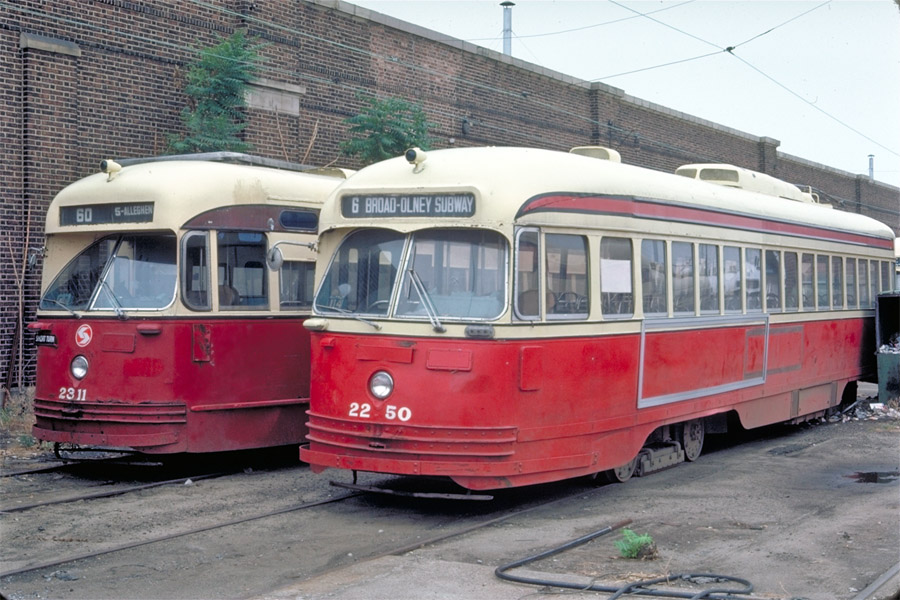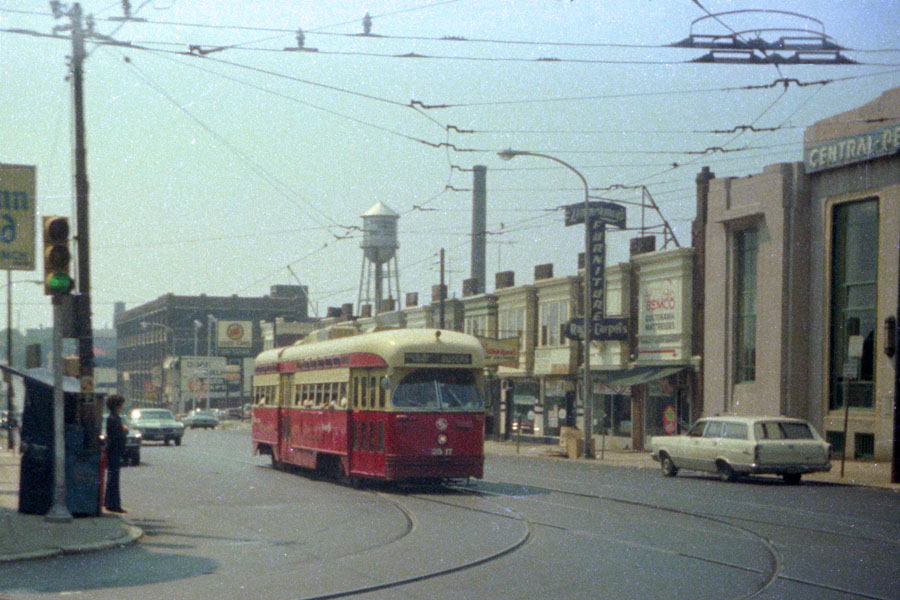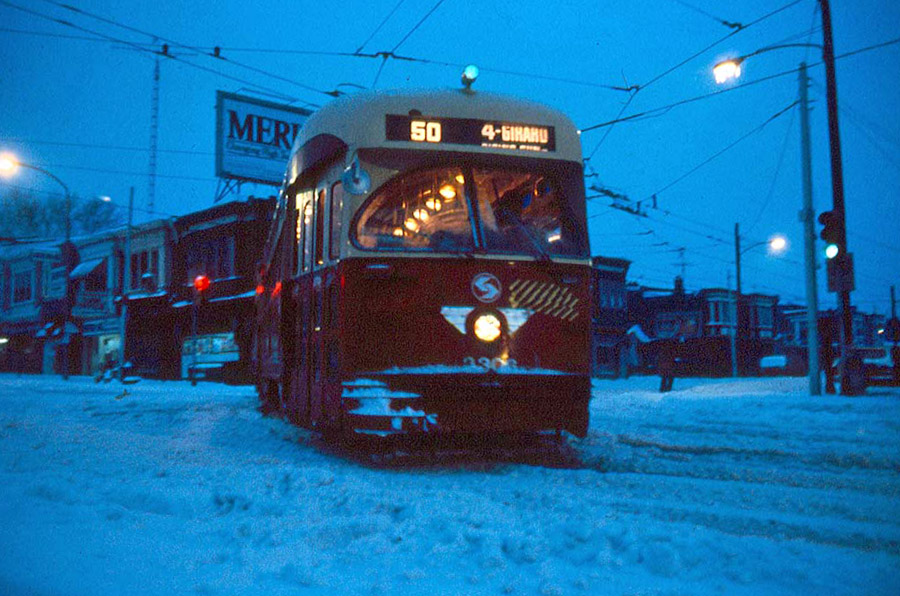yrt+viva=1system
Senior Member
[video=youtube;toPZXWa14KA]http://www.youtube.com/watch?v=toPZXWa14KA[/video]
|
|
|
JBG: I should have mentioned SEPTA's Weekly Passes along with the two single-day passes previously...
The Transpass is a good deal - if you do not use Regional Rail (other than the Airport Line) and stay primarily within the City of Philadelphia...
Transpasses are only valid between the five Center City stations (from Temple University to 30th Street and University City) and on the Airport Line as mentioned anytime...
I read that, and with the Market-Frankford and Broad Lines being 24 hours on the weekdays, it's a great deal.The best SEPTA pass perk of all is the ANYWHERE privileges on Saturday,Sunday and major holidays that ALL SEPTA Weekly and Monthly passes can be used for...
In terms of fare integration, SEPTA does a better job than TTC and GO.Do SEPTA passes compare well with the TTC's or GO's?
What I found really cool about the IVs, is passengers can enter the EMU through the operator cabs! That is really unique for a commuter rail system.The SEPTA Silverliner Four RRD cars (numbering about 230) date from 1974-75-76...They have held up well despite their age with renovations...
RM: The Norristown High Speed Line has a interesting-and long history...It is over 100 years old and has trolley ancestry...See: http://en.wikipedia.org/wiki/Norristown_High_Speed_Line
LI MIKE
JBG: I should have mentioned SEPTA's Weekly Passes along with the two single-day passes previously...
The Transpass is a good deal - if you do not use Regional Rail (other than the Airport Line) and stay primarily within the City of Philadelphia...
Transpasses are only valid between the five Center City stations (from Temple University to 30th Street and University City) and on the Airport Line as mentioned anytime...
When I stay in Philadelphia and buy a SEPTA pass I normally buy a Zone 1...This allows off-peak Regional Rail use to stations outside of Center City that are within the boundaries
of the City of Philadelphia and a extra zone for suburban use...
Depending on which lines you use a Zone 3 - offering system-wide off peak travel and the "ANYWHERE" pass allowing full system-wide travel at any time can be better buys...
If you ride SEPTA Regional Rail and extend your ride on weekdays past your zone if it is a Zone 1 or 2 or 3 (peak hours) it is a $4 flat on-board charge...
The best SEPTA pass perk of all is the ANYWHERE privileges on Saturday,Sunday and major holidays that ALL SEPTA Weekly and Monthly passes can be used for...
Do SEPTA passes compare well with the TTC's or GO's?
The SEPTA Silverliner Four RRD cars (numbering about 230) date from 1974-75-76...They have held up well despite their age with renovations...
RM: The Norristown High Speed Line has a interesting-and long history...It is over 100 years old and has trolley ancestry...See: http://en.wikipedia.org/wiki/Norristown_High_Speed_Line
LI MIKE
Disaster struck the already hard-pressed SEPTA (Philadelphia) system when 60 PCCs were lost in the Woodland Depot fire in October 1975. This led to immediate negotiations with TTC which concluded a sale of 30 PCCs in March 1976. These comprised all but two of the remaining A-14s, nos. 4750-4751, 4756, 4759, 4761-4762, 4765, 4767, 4772-4773 and 4779, and 19 of the A-13s, nos. 4706-4707, 4709-4711, 4718, 4724, 4726-4732, 4734, 4740-4741, 4744 and 4746. The terms were far more lucrative than the San Francisco sale three years previously, SEPTA having to pay $12,500 each for units already due for retirement plus another $15,000 for each of the 15 cars TTC would regauge before they were shipped to Philadelphia. The first cars were shipped on 15 March 1976: nos. 4731, 4750 and 4762. So desperate were their new owners that these three cars were pressed into service within days of their arrival in Philadelphia on the 25th. Three cars were to be loaded every other week thereafter until November of that year, using special flat cars with dummy trucks that had to be cycled back and forth between the two cities.
The thirty used PCC cars that SEPTA purchased from Toronto Transit Commission in 1976 were bought for a negotiated price of $12,500 as is, where is. The total cost of the purchase was $375,000. The cars had been built in 1946: eleven ex-Kansas City cars built by St. Louis Car Co., and nineteen ex-Birmingham cars built by Pullman-Standard. Both fleets were basically in passenger service in Toronto right up until the time they were about to be shipped to Philadelphia.
After being taken out of service, the trucks (wheel assemblies) under the cars were re-gauged by TTC crews at Hillcrest Shops from Toronto gauge (4' 10-7/8") to SEPTA gauge (5' 2-1/4"). Cost of reguaging and shipping came to about $4000 each.
At Hillcrest Shops, the cars were placed on unpowered dummy trucks, and pushed up onto Canadian Pacific flatcars using a specially built ramp. The re-guaged trucks were placed on the flat car along with the trolley. The cars were shipped in ten groups of three cars each.
The first shipment left Toronto on March 15, 1976 and consisted of ex-Birmingham 4731, and ex-Kansas City 4750 and 4762.
This first shipment was unloaded on March 23 at the Penn Central freight yards at 51st and Columbia in West Philadelphia, then lifted by crane onto a flat-bed trailer truck. They were hauled to Callowhill Depot where the cars were put onto the re-gauged trucks. The cars were then operated the eight miles over city streets to Luzerne Depot to be readied for service.
The second batch of 4711, 4742 and 4772 departed Hillcrest Shops on April 12. This process continued through the summer and fall until the last cars were shipped on November 22, 1976.
When the cars went into service in Philadelphia, they remained in TTC colors. Only the numbers were changed, the TTC shield painted over, and the SEPTA logo applied. The glass windows were changed in favor of unbreakable lexan, which was being installed on all SEPTA GOH (general overhauled) PCC cars at the time. The unique blue glass that had been specified for the upper sashes of the ex-Kansas City cars' rear-quarter windows when they were built in 1946 was removed and replaced with clear lexan, too.
Track switch operation would prove to be a problem, and was another reason why Route 60 was chosen for the ex-TTC cars. Toronto had a unique "necessary action" format for track switches. This would not be compatible with Philadelphia's system, and therefore track switches could not be operated electrically. Switches would need to be thrown manually by the operator, who would stop the car, get out and move the switch point with a switch-iron. It was thought that Route 60 would be the best route for having to do this. Other than Richmond and Westmoreland Loop, the only location where a switch would have to be thrown with any regularity would be Richmond and Allegheny, where Routes 15 and 60 diverge.
In 1976, trolley cars on the SEPTA system were equipped with wheels at the tops of the trolley poles to receive power. The Toronto cars arrived with slider-shoes on the poles instead of wheels, and it was decided to retain sliders on the cars as an experiment. During 1976 it was decided to convert all SEPTA surface rail vehicles to the slider-shoe type of power collection. After the overhead wire fittings were changed over for slider operation, Luzerne PCCs received sliders during the summer of 1976. Route 23 was the first line to be totally changed over to trolley slider-shoe operation. It it was not until 1980 that Woodland and Callowhill cars had their trolley pole wheels replaces with shoes.



Do we yet know how fare payment will be handled on our new LFLRV when it enters service on 510 Spadina on August 31st?
As they are well behind in filling orders and the Bombardier plant is on strike it is VERY doubtful they will catch up by December 31. (It is only 4.5 months away - a scary thought in itself.)I'm not sure if this has been covered already, but I noticed on the above PDF link posted, there was supposed to be 9 of these delivered in 2013, and 34 in 2014, which means 43 by the end of the year. Is this no longer the case?
As they are well behind in filling orders and the Bombardier plant is on strike it is VERY doubtful they will catch up by December 31. (It is only 4.5 months away - a scary thought in itself.)
I think we are still at 4.. With 4004 still needs to be delivered from my understanding.
The TTC was originally planning for 6 streetcars when they enter service, and it looks like we will see 4 or 5, so we may not be that far off the delivery schedule.
We are at two. 4000 that was delivered in early July and 4003 that was delivered in late May. 4001 and 4002 are prototypes that will be returned to Bombardier. There has been some suggestion that Bombardier has chosen to replace them completely, rather than modify as production units like they did with 4000.How many have been delivered already? 4? 5?
We are at 2. If 4004 arrives anytime soon it would be 3.I think we are still at 4. With 4004 still needs to be delivered from my understanding.
TTC was originally planning to start service in 2012 or 2013. We will see 2 units running on the first day, unless there is some miracle deliveries very soon.The TTC was originally planning for 6 streetcars when they enter service, and it looks like we will see 4 or 5, so we may not be that far off the delivery schedule.




